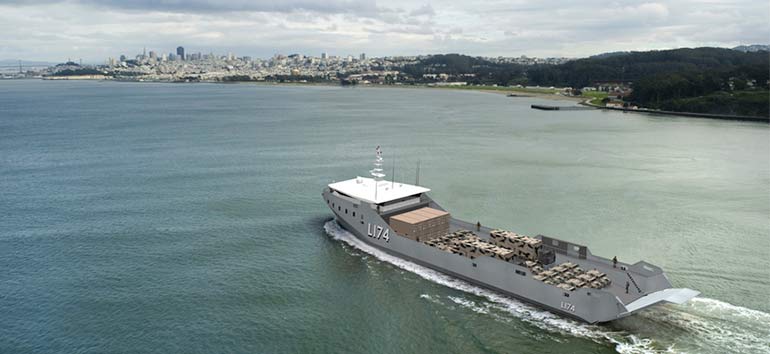
The Navy and Marine Corps are quickly seeking new ideas that allow Marines to support the Navy in sea control and other maritime missions, including the rapid acquisition of a light amphibious ship and a movement toward using Marine weapons while at sea.
Maj. Gen. Tracy King, the director of expeditionary warfare on the chief of naval operations’ staff (OPNAV N95), told USNI News during a Jan. 8 media call that the services are moving quickly to buy their first light amphibious warship (LAW) in Fiscal Year 2022, as outlined in the recent long-range shipbuilding plan.
“We’re moving out at flank speed; I got a chance to brief the CNO and the commandant recently, and they told me to maintain course and heading,” he said during the media call ahead of the annual Surface Navy Association symposium.
“We’re going through the formal JCIDS (Joint Capabilities Integration and Development System) process right now. [Naval Sea Systems Command] has completed its second industry studies, and we’re working on all those documents.”
For now, 10 or 11 industry teams remain involved in the NAVSEA competition, which recently held a second round of industry studies. NAVSEA is working with those teams to help iterate what King called “novel” designs, to ensure they were the right size and could achieve cost and performance requirements. Mid next year, he said, NAVSEA would downselect to three teams for full design, and then would downselect to just one to build the first LAW in late FY 2022.
“My suspicion is that we’ll begin [research, development, test and evaluation] next year, and then we are aiming at lead ship construction in FY ’22, it’s going to be late in FY ’22 ,but I still consider that pretty fast,” King said.
“We’re just going to build one, get that out and start playing with it. We’ll probably build one the next year because we’ve got to get the doctrine right. The [Marine Littoral Regiments] are going to start coming online at about the same time – first one’s in Hawaii, we’ll get it out there and let them play with it. And then we’ll go into a build profile of, I don’t know, probably four or five a year or something like that is what we’re going to aim for.”
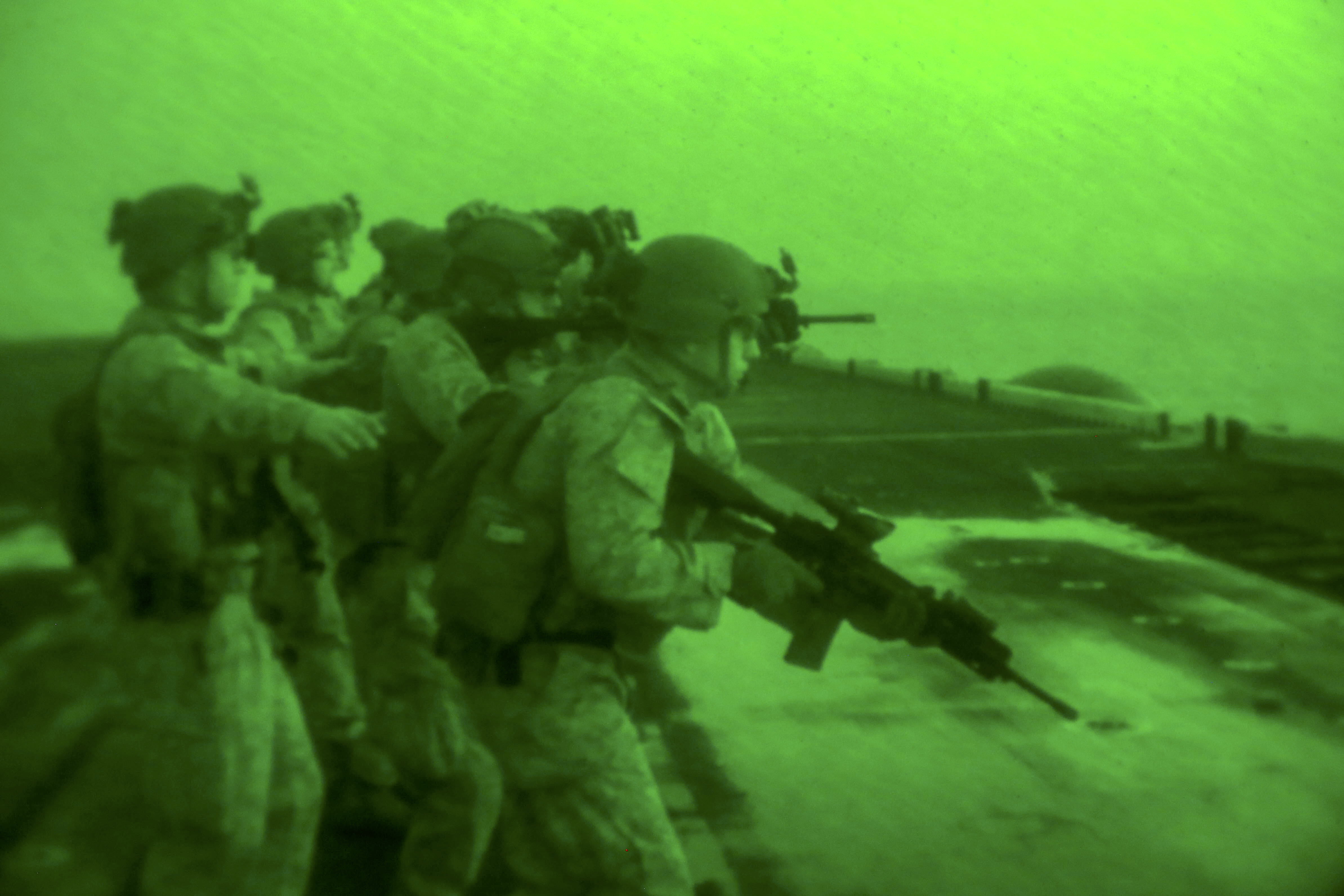
King and Deputy Commandant for Combat Development and Integration Lt. Gen. Eric Smith have been vocal proponents of LAW since Commandant Gen. David Berger released a 2019 Commandant’s Planning Guidance that suggested an overhaul in how Marines maneuvered around the sea, putting less emphasis on traditional large amphibious ships designed for forcible entry and instead focusing on ways to get a lot of small groups of Marines dispersed throughout the littorals.
“I think we’re on track, I think we’re moving out smartly, and I’m excited about it because … I’m very pessimistic about the way our relationship with China is going, and we absolutely need this capability to continue to deter what could end up being a big war,” King said in the call.
“A ship that can go 3,000, 4,000 miles, haul around 75 guys with excess cargo, excess fuel, serving as a lilypad and really enhancing the tactical maneuver of those small Marine units is really going to be something that a potential adversary has a hard time countering. Not a forcible entry platform, not a ship to shore connector, but a lilypad that our guys can get on, and the Navy can really complicate China’s calculus.”
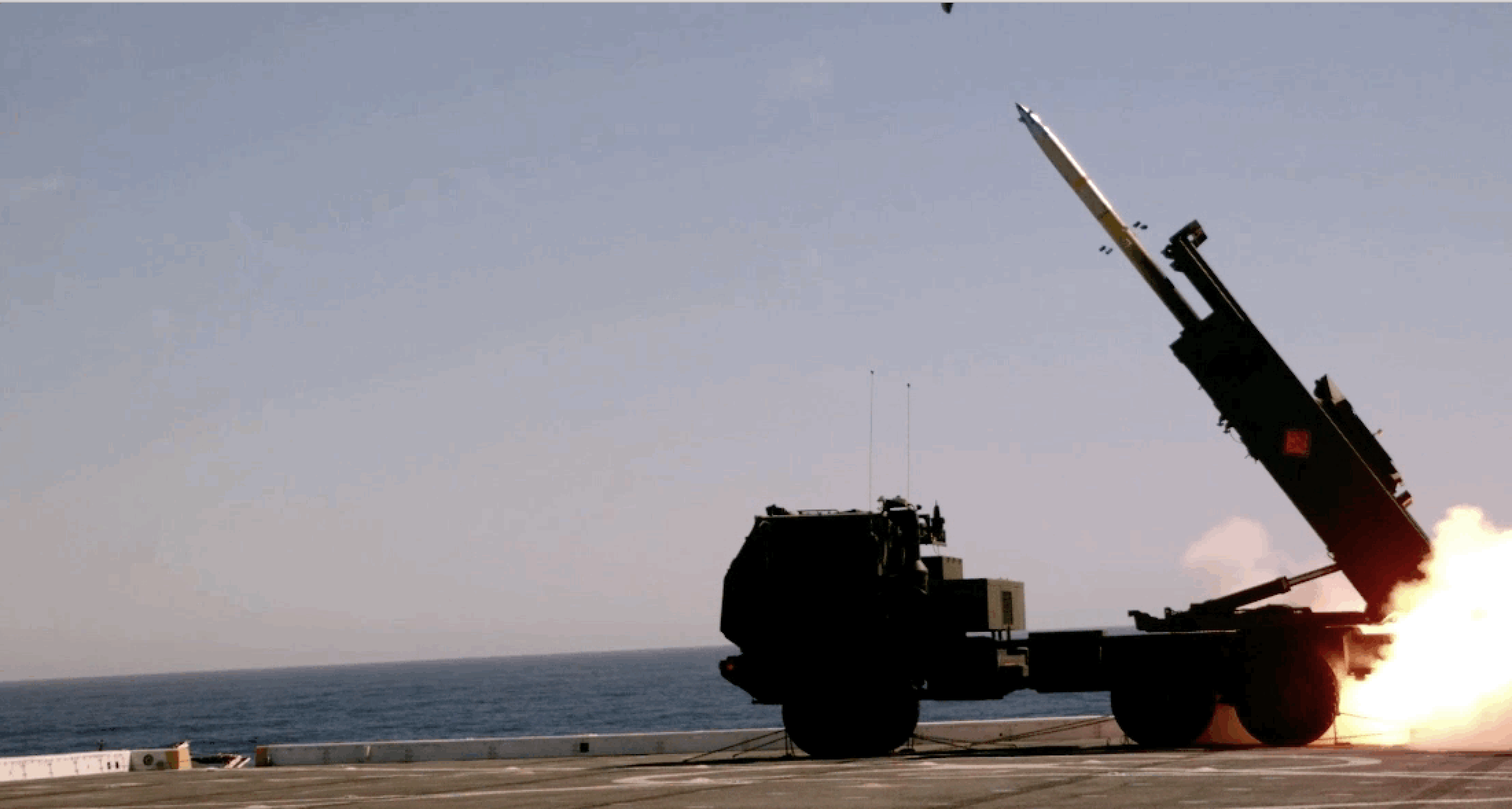
As for operations with traditional amphibious ships – specifically the San Antonio-class amphibious transport docks (LPD-17) – King said he was looking at ways to add anti-ship missiles to the hulls and to allow the ship commander to make better use of the Marines’ assets while sailing at sea.
“We want to uncoil some of the lethality that’s resident in the [Marine Air Ground Task Force] when we’re in transit, which we traditionally haven’t done,” King said.
On the simpler end of that conversation, King said, “can you think of a better resource to get after countering FAC/FIAC than the rotary wing [close-air support] that comes with a Marine Aviation Combat Element? I mean, the Cobra is a magnificent asset to help protect the fleet, especially when she’s doing close in-shore transit. And we’re doing that on different platforms,” he said.
Additionally, the Navy and Marines are working on developing a vertical launch and recovery variant of the RQ-21 Blackjack unmanned aerial vehicle, as opposed to the original Blackjack that uses a pneumatic launcher and a large skyhook recovery system that’s too large to fit on some ships in the Navy. The services are figuring out if the vertical launch and recovery mechanism would force the drone to lose anything in terms of its endurance or ability to carry payloads, but King said the new variant could help the naval team get more eyes and ears in the air.
Somewhat more complex is figuring out how to equip LPDs with anti-ship missiles. LPDs were originally designed to include vertical launching system cells but ultimately weren’t built to include them; refitting them would be a complex and costly effort, but King said the Navy is considering outfitting them with canisters of the Naval Strike Missile, much like the service did to the Littoral Combat Ship to increase their lethality.
“The actual material solution is not my concern, which missile we put on the ship. But you heard me say, if it floats it fights. We have these magnificent 600-foot-long, highly survivable, highly capable LPD-17s that, in my humble opinion … I think that the LPDs need the ability to reach out and defend themselves and sink another ship,” King said.
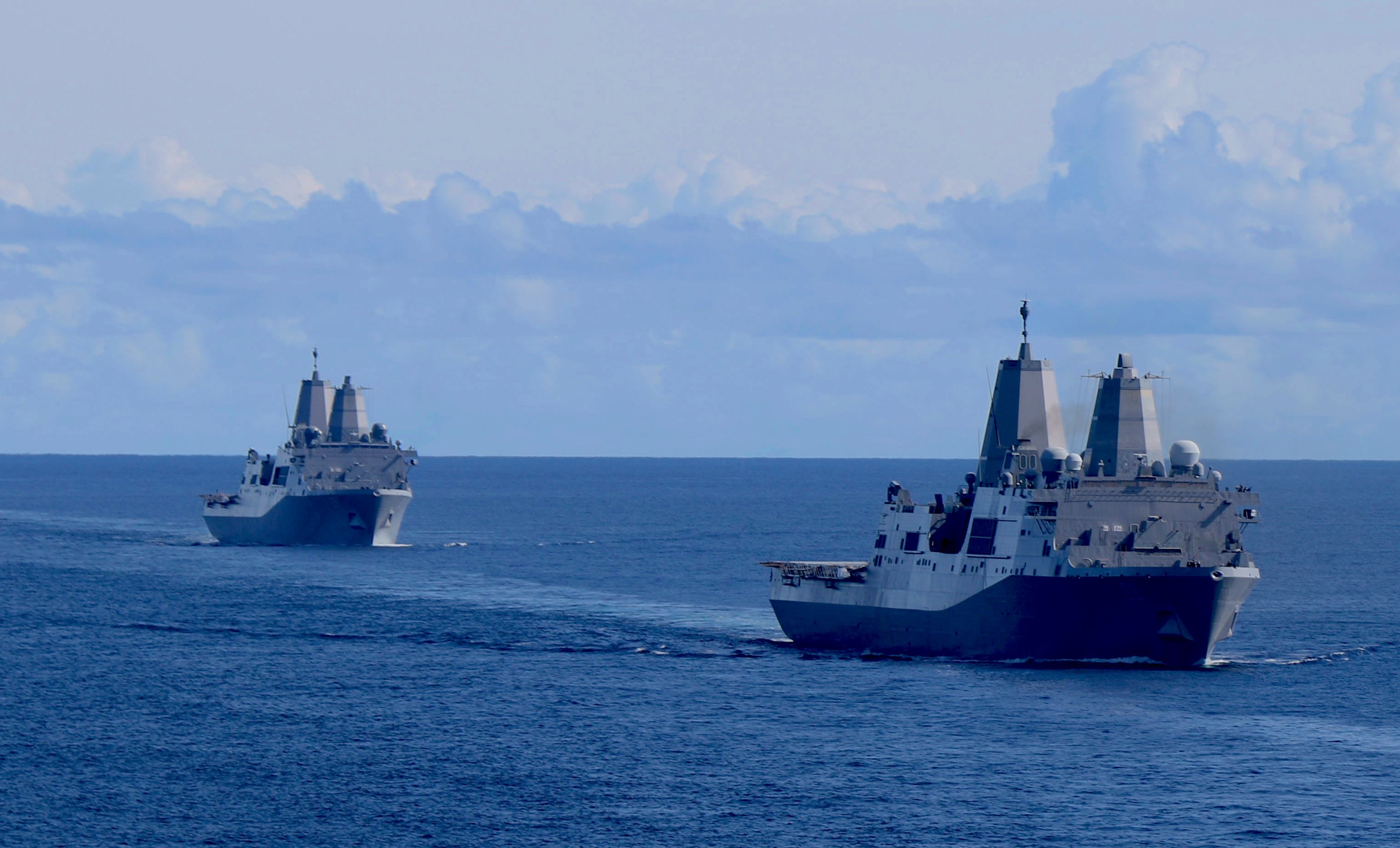
His interest isn’t LPDs becoming a surface strike platform, but rather having anti-ship missiles would increase the survivability for the sailors and Marines onboard “because the enemy has to honor that threat.”
The issue with the Naval Strike Missile option is that the Navy is currently using its inventory to up-arm LCS ships, with otherwise are limited to self-defense capabilities rather than offensive weapons. King said there was no appetite for up-arming LPDs at the expense of LCS, so the Navy is working with Raytheon to address NSM production rates.
The general said he expects that within the next year the Navy would test-fire a NSM off an LPD to develop the doctrine of how that would work, and to confirm through fleet feedback if it’s worth the money and effort to add these missiles to amphibs.
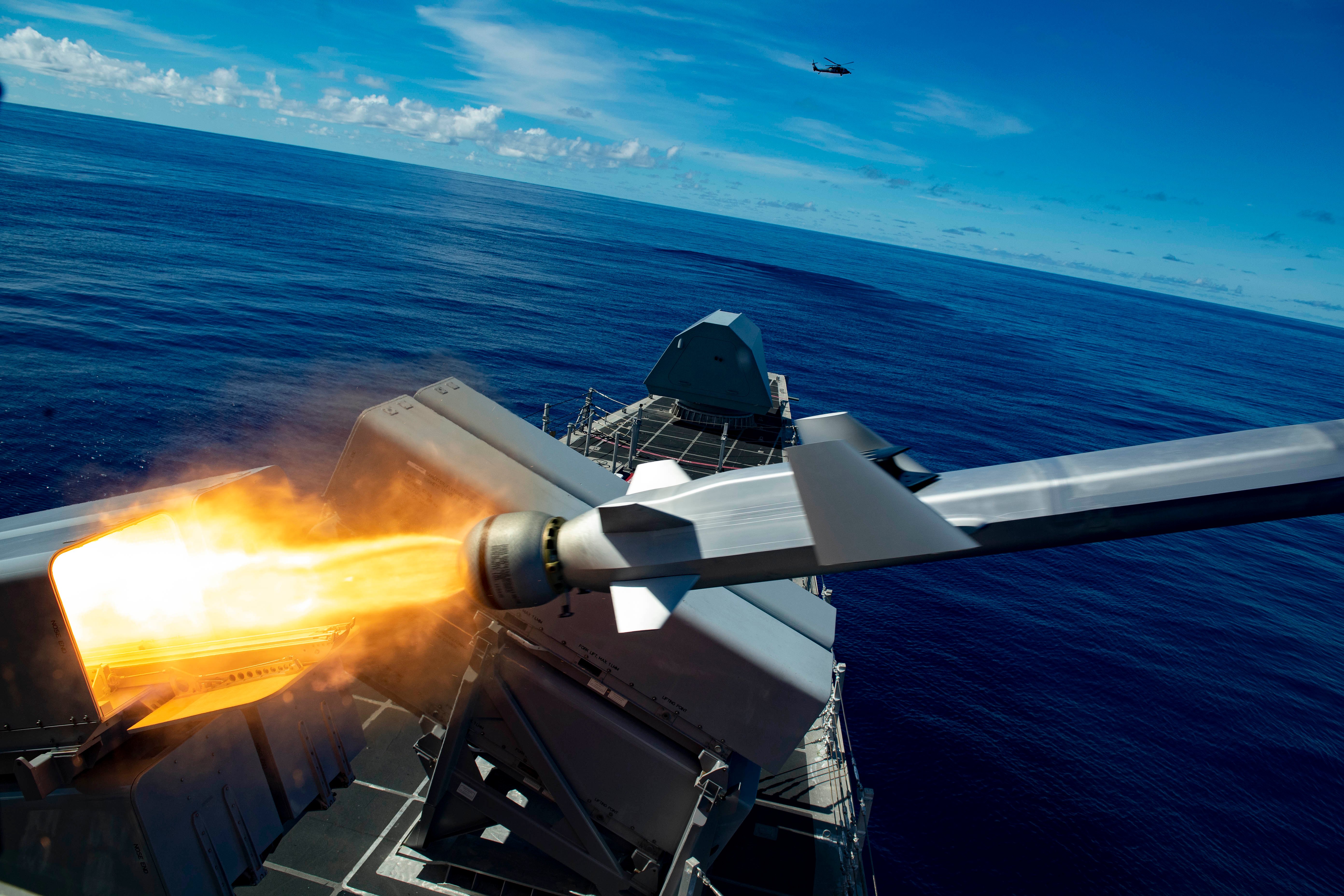
“I’m going to keep leaning into it,” King said, adding that he’s been tasked to conduct a full analysis with wargaming work to see if the NSM does increase LPD lethality and survivability and if the enemy would honor that threat. That data will help inform the conversation with fleet commanders, who may not be convinced that the NSM inventory should go to LPDs.
At the same time, though, there’s also a conversation about using Marines’ weapons – which will soon include expeditionary land-based anti-ship missiles – to conduct at-sea warfare.
“In my mind’s eye, what I see, going back to uncoiling the lethality of the MAGTF, I see containerized weapon systems that the Marine Corps is using, when we jump onboard a ship, that becomes available to the ship’s captain. So maybe we don’t need to install launchers and NSM; maybe the Marine Corps [expeditionary advance base operations] forces serve as the main battery when we’re moving out,” King said.
“To me, that just makes sense. We give the latitude and the flexibility to that ship’s captain to use those assets when he needs to. There’s been some naysayers to that, mostly in my tribe, because if you use all my missile before I get there, I don’t have my missiles. But I’m a little bit dismissive of that complaint because the ship’s got to get there first. So I think you’re going to see us employing containerized weapon systems that we can use wherever we want to use them.”





